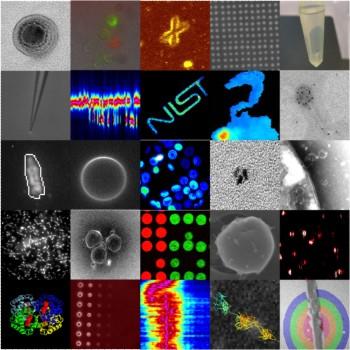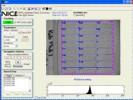Summary
Biophotonics is at the intersection of photonics and biology where light is used to image, detect, and manipulate biological materials. This project addresses several factors that are critical for the successful development and integration of biophotonic applications in bioscience research and medicine: diagnostic and clinical standards for validating the efficacy of biophotonics-based applications, imaging standards to ensure high fidelity, a thorough understanding of the fundamental physics underlying new biophotonics-based therapeutic techniques, and measurement and science standards for improving manufacturing quality, promoting acceptance of biophotonics technology,and advancing the understanding of the interaction between biological systems and photons.
Description

Nano-biophotonics consists of four broad areas: molecular bioimaging; nano-biosensors; multiplexed bioassays; and nanotechnology-based medical practices for diagnosis and therapy. Success in these areas is challenged by the underlying complexity of biological systems. Major levels of complexity and associated technical barriers appear at all levels of biology including the molecular, cellular, and tissue and organism levels. To address these challenges, our research strategies are based on the following approaches.
- Molecular level: we are developing optical measurement tools to study biomechanics of intra- and inter-molecular interactions and interactions between organic molecules and nanomaterials in a controlled environment in support of quantitative use of nanomaterials and novel probes in biology and medicine.
- Cellular level: we are developing optical measurement techniques to investigate molecular interactions and processes in single cells andsingle cell-based optical techniques, standards, and validation assays in support of cell-based disease diagnostics.
- Tissue and organism level: we are developing integrated molecular optical imaging techniques for optical diagnostics of tissues and organisms in support of standardized optical medical imaging in clinic.
Major Accomplishments
Areas of related measurement science and techniques include:
- Time-correlated confocal nano-spectroscopic microscopy of single and clustered nanoprobes
- Integrated microscopy of photo-excited nanoparticles and related processes
- Optical tweezers and single molecule spectroscopy and microscopy
Areas of related measurement science and techniques include:
- Nano-biosensors of nanoscale building blocks
- Multimodal optical microscopy of molecular dynamics and cellular processes
- Hyperspectral imaging of in vivo simulated cell culture

Areas of related measurement science and techniques include:
- Multiplexed high-throughput biomolecular assays
- Fusion proteins for dynamical studies of infectious diseases
- Image analysis software for quantitative and dynamic molecular imaging
- NIST's Integrated Colony Enumerator (NICE)
- Single particle tracking analysis
- Dynamic imaging of cellular processes

